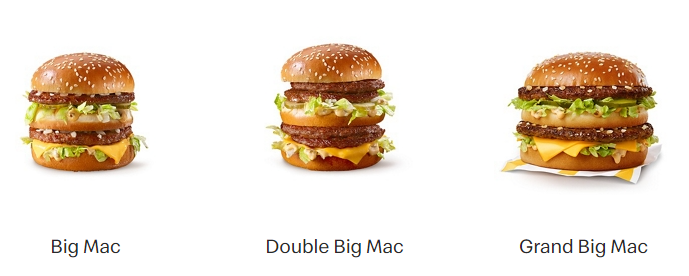

I’m not sure you’re getting the gist of using “The Big Mac Index”. So if the index tells you the dollar is overvalued, the problem is worse than implied. But at that exchange rate, the Big Mac index would find dollar undervalued. But assuming the state sales tax and VAT are both border adjusted (e.g., not imposed on exports), and ignoring pesky details (like trade and transport margins and the fact that Big Macs are not internationally traded), the dollar and euro prices of exported Big Mac’s would be equal if the price of the dollar was just 1 euro. Then, Big Mac index would encourage you to believe that the PPP price of the dollar should be about 1.14 euros (= 1.20/1.05). state with a typical sales tax (about 5%). and 1 euro in members of the euro bloc, and that you buy the Big Mac in a U.S. Suppose further that the price of the Big Mac before any tax was $1 in the U.S. But the VAT is rebated at the border and imposed on imports, so it should not be included in the price if the purpose is to get a PPP gauge.įor example, suppose the local VAT is 25% (roughly right, I think, for most EU members). In constructing the index, the Economist includes all taxes, including any VAT, in the price. Menzie, I commented to you before on an important shortcoming of the Big Mac index, but I’m going to repeat it here: The index tends to understate the purchasing-power-parity (PPP) value of the dollar against countries that have a substantial border-adjusted value added tax (VAT). The Micro-foundations of Big Mac Real Exchange Rates. Update, 7/16, 1:30am Pacific: For more econometric analysis of PPP reversion, etc., re: Big MacParity, see David Parsley and Shang-Jin Wei’s incredibly thorough piece on the subject in 2007 Economics Journal ungated version: A Prism into the PPP Puzzles: Additional economic reasons to be wary of massive fx intervention on the basis of alleged currency misalignment from Mark Sobel.įor a recent assessment using price level data, see Cheung, Chinn and Xing (2017), referring to exchange rates in 2014. The results suggest that if one is using Big MacParity accounting for income levels, then Trump should really be pursuing… Russia (and Singapore). (If I’d forced the fitted curve to go through log relative price 0 at log relative per capita income 0, then I’d be assessing the Penn effect in US dollar terms). The prediction interval indicates that there is some imprecision regarding whether the US dollar is truly overvalued, whether the Chinese yuan is undervalued, relative to a multilateral assessment of the best fit estimate of the relationship. Note that the results incorporate the fact that lower income countries have lower prices for Big Macs, instead of using the PPP baseline which would imply a Moldovan Big Mac costs the same as a Swiss Big Mac. The nonlinear specification is due to Hassan (2016). Source: Economist, IMF World Economic Outlook April 2019 database, author’s calculations. Penn Effect line estimated using quantile regression (black) and 60% prediction interval (gray). įigure 1: Log price level relative to US price level plotted against log relative per capita income, both in 2019.

In Figure 1, I present the price of a Big Mac in US dollar terms (relative to the price in the US, logged) against the relative income levels of a country relative to that of the US. Rather, the “ Penn effect” holds, so that a proper assessment of currency misalignment should consider the country’s per capita level of income. The other concern is (2) as I highlight in my recent survey for the Oxford Research Encyclopedia of Economics Finance, strict PPP is unlikely to hold for countries of substantially different levels of per capita income. That makes sense on a bilateral basis, but we live in a multilateral world. Using (1), if a particular currency is overvalued relative to the dollar, the dollar must be undervalued relative to the particular currency.

There are two key aspects to recall from this exposition: (1) the dollar is the benchmark, and (2) PPP is the metric.


 0 kommentar(er)
0 kommentar(er)
